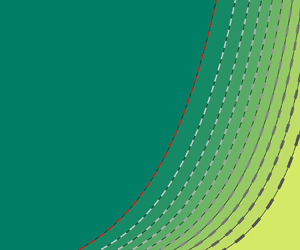Article contents
Scaling of vertical coherence and logarithmic energy profile for wall-attached eddies during sand and dust storms
Published online by Cambridge University Press: 25 September 2024
Abstract

High-frequency observation data, including all three components of instantaneous fluctuating velocity, temperature, as well as particulate matter 10 ( $PM_{10}$), collected from the unstable atmospheric surface layer at
$PM_{10}$), collected from the unstable atmospheric surface layer at  $z/L = -0.11$ and
$z/L = -0.11$ and  $-$0.12,
$-$0.12,  $L$ being the Obukhov length, during sand and dust storms (SDS), were used to explore the scaling of vertical coherence and the logarithmic energy profile for wall-attached eddies. The present results demonstrate good agreement with the self-similar range of the wall-attached features for velocity and temperature components, as well as for
$L$ being the Obukhov length, during sand and dust storms (SDS), were used to explore the scaling of vertical coherence and the logarithmic energy profile for wall-attached eddies. The present results demonstrate good agreement with the self-similar range of the wall-attached features for velocity and temperature components, as well as for  $PM_{10}$ at lower heights (
$PM_{10}$ at lower heights ( $z<15$ m) during SDS. Following the idea depicted by Davenport (Q. J. R. Meteorol., vol. 372, 1961, pp. 194–211), an empirically derived transfer kernel comprises implicit filtering via a scale-dependent gain and phase, parametrically defined as
$z<15$ m) during SDS. Following the idea depicted by Davenport (Q. J. R. Meteorol., vol. 372, 1961, pp. 194–211), an empirically derived transfer kernel comprises implicit filtering via a scale-dependent gain and phase, parametrically defined as  $|H_L^2(f)|=\exp (c_1-c_2\delta /\lambda _x)$, where
$|H_L^2(f)|=\exp (c_1-c_2\delta /\lambda _x)$, where  $c_1$ and
$c_1$ and  $c_2$ are parameters,
$c_2$ are parameters,  $\delta$ is the boundary layer thickness and
$\delta$ is the boundary layer thickness and  $\lambda _x$ is the streamwise wavelength. Linear coherence spectrum analysis is applied as a filter to separate the coherent and incoherent portions. After this separation procedure, the turbulence intensity decay for wall-attached eddies is described in a log–linear manner, which also identifies how the scaling parameter differs between the measured components. These findings present abundant features of wall-attached eddies during SDS which further are used to improve/enrich existing near-wall models.
$\lambda _x$ is the streamwise wavelength. Linear coherence spectrum analysis is applied as a filter to separate the coherent and incoherent portions. After this separation procedure, the turbulence intensity decay for wall-attached eddies is described in a log–linear manner, which also identifies how the scaling parameter differs between the measured components. These findings present abundant features of wall-attached eddies during SDS which further are used to improve/enrich existing near-wall models.
Information
- Type
- JFM Papers
- Information
- Copyright
- © The Author(s), 2024. Published by Cambridge University Press
References
- 5
- Cited by


